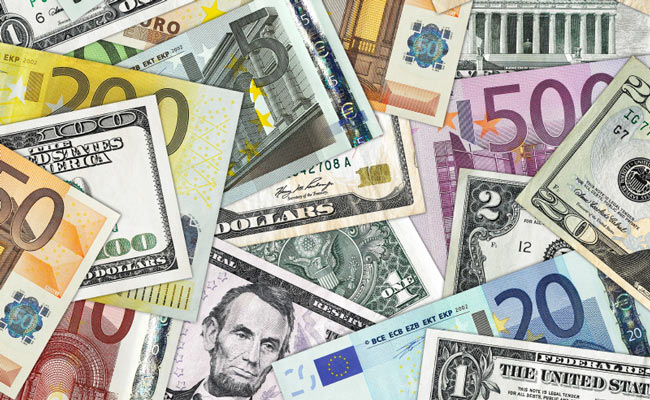Companies like TransferWise and CurrencyFair are gaining popularity in the online money transfer market. Will such services disrupt traditional banking the same way Skype disrupted long-distance telephony?
TransferWise, a start-up that offers a low-cost way for consumers to exchange currency, recently raised $25 million, bringing it one step closer to convincing consumers and investors that it really will become “the Skype of money”, as it bills itself–particularly as the London start-up counts as its latest investor Sir Richard Branson, the British entrepreneur behind the Virgin conglomerate, and Peter Thiel, co-founder of PayPal.
The two are right to smell an opportunity. Migrant workers’ remittances to the developing world alone amounted to more than $400 billion in 2013, according to World Bank data. The individuals sending their money home pay an average fee of more than 8% of the total deposit to move cash from country A to country B–not including a pricey exchange rate—making the industry seem as ripe for a shake up as pre-Skype long-distance calling.
However, payment experts say that disrupting today’s global banking patterns may not be nearly as easy to dislodge as the traditional long-distance telephone system proved to be.
TransferWise’s model, and that of its primary competitor, Dublin start-up CurrencyFair, involves matching buyers of currency in one country with sellers in another, taking out the middleman position currently occupied by banks and money transfer services such as Western Union—conceptually simple, but perhaps not that easy to execute.
Despite the fact that such services can undercut conventional services by a lot—CurrencyFair, claims it can transfer money for as little as 0.50% on the total amount exchanged, a tenth of the conventional fee—disrupting the market may not prove easy.. Moving money between countries is complex enough that some payments service experts argue that no new players are likely to upset the traditional distribution channels anytime soon.
One London-based financial technology consultant and serial entrepreneur is skeptical that TransferWise has a real strategic competitive advantage. “I wouldn’t say their success is guaranteed, unless they can get enough two-way volume to convert large payments (e.g. €10,000) instantly (last time I used them, it took a few days),” writes Jack Gavigan, in an email.
Two Big Barriers
Beyond the typical pressure of achieving scale, start-ups pursuing new models of money transfer services face two major challenges, according to Bill Maurer, a Californian cultural anthropologist who studies money exchange.
As dean of Social Sciences at the University of California at Irvine and the director of the Gates Foundation-funded Institute for Money, Technology and Financial Inclusion, Maurer sees two major obstacles ahead for TransferWise and other start-ups with similar goals.
One is regulatory. Moving money, particularly in the post-9/11 era, is a highly regulated activity, not just between countries, but sometimes even within countries: in the US, for instance, in addition to federal regulations, each of the 50 states has its own banking regime, according to Maurer.
The other entrepreneurial limitation is market knowledge. In his research, Maurer says, one regulator told him he found it curious that people understand that anytime someone wants to open a deli, they need to meet the requirements of local health inspectors, but that somehow entrepreneurs have a hard time understanding that the same will be true if they want to change money.
Often, Maurer argues, the people involved in creating these services also have a limited understanding of their potential customers. The world looks very different if you’re a 29-year-old programmer in Silicon Valley than if you’re a Filipino migrant worker, he says. TransferWise, for example, presupposes not only that senders and receivers have a bank account but an account with a major bank that can supply them with international bank routing numbers, he adds.
By contrast, the major players in international remittances understand the needs of their customers very well, according to Maurer, for example, by allowing people to exchange cash even without bank accounts. Beyond that, some established players have spent a long time integrating themselves into the communities they serve. Western Union, for example, often sponsors athletic teams in its customers’ communities, for example, and offers educational programs that help new migrant workers understand the legal challenges they may face.
Yet despite these challenges, transfer systems do seem to be evolving towards greater efficiency. Recent World Bank statistics show that over the past six years, the cost of a typical $200 remittance has fallen from 9.81% in 2008 to 8.14%, a record low since 1990 and a huge savings for millions of people all over the world, particularly migrant workers and their relatives back home who rely on their remittances.
New sources of competition are pushing the price down–not just TransferWise and CurrencyFair, but Azimo, a global payment system that offers rates at a discount relative to traditional bank transfers but which uses a traditional banking structure, and PayPal.
In addition, a concerted effort by G20 governments to reduce transfer red tape has also helped lower costs, according to Marco Nicoli, a senior knowledge management officer of the Payment Systems Development Group at the World Bank in Washington, D.C., and manager of the Remittance Prices Worldwide Report.
For now, however, transfer prices remain significant in many places for two reasons, according to Nicoli. Either the infrastructure of the country is weak, and the cost of delivering cash is high, or there are just a few established players who face little competition–or both.
But Maurer sees a kind of race under way, particularly in the developing world, between the telecoms, who have a new, ubiquitous communication network but no experience in operating a financial channel, and the large credit card providers, who know the money business but lack the infrastructure to deliver their service.
In addition to their efforts, a number of different innovative systems are beginning to take root as well, perhaps more by virtue of successful improvisation than conscious design. In sub-Saharan Africa, for example, Maurer notes that that some networks have developed that enable people to trade mobile phone airtime as a kind of alternative currency.
A formal version of this system, M-PESA (M for mobile, PESA for money in Swahili) launched by Vodacom and Safaricom in 2007, now enables millions of people to trade cash in Kenya and Tanzania. Vodafone, a shareholder of Vodacom, is now trying to bring it to other markets as well, elsewhere in Africa and as far as India.
App for killers or killer app?
But for now, the traditional channels are still going strong. Western Union, for example, pays its investors a 2.9% dividend, and maintains a $9.5 billion market cap.
Perhaps one of the biggest reasons money hasn’t been given the Skype treatment yet is that in some markets, people are under less pressure than commonly supposed.
TransferWise operates on a similar principle as the hawala money transfer system out of the Middle East and South Asia, a 1000-plus year old style of money brokerage in which value is transferred back and forth between networks of brokers, as the agents add or subtract money between the parties at either end of the transfer, minus a small commission, and little money ever actually crosses a border.
International money laundering authorities don’t like hawala because such transactions typically lack an audit trail, making it an ideal vehicle for money laundering, and in South Asia, such networks have a very negative connotation. Yet old-fashioned hawala networks may continue to give these high-tech start-ups a run for their money. For consumers sending remittances back home, hawala offers a much faster, much cheaper alternative to conventional bank transfers–one-day settlement at a better exchange rate than banks typically offer and a fee as low as 2%, according to a number of reports. Even in desperate, war-torn Somalia, the going rate is 4%, according to according to a UN report.





















